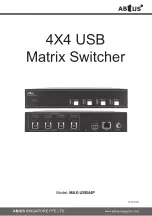
15-1
v1.0, June 2010
Chapter
15
Tools
In this chapter, the following examples are provided:
•
“Traceroute”
•
“Configuration Scripting” on page
15-3
•
“Pre-Login Banner” on page
15-5
•
“Port Mirroring” on page
15-6
•
“Dual Image” on page
15-8
•
“Outbound Telnet” on page
15-11
Traceroute
This section describes the Traceroute feature. Use Traceroute to discover the routes that packets take when
traveling on a hop-by-hop basis to their destination through the network.
•
Maps network routes by sending packets with small Time-to-Live (TTL) values and watches the ICMP
time-out announcements
•
Command displays all L3 devices
•
Can be used to detect issues on the network
•
Tracks up to 20 hops
•
Default UPD port used 33343 unless modified in the
traceroute
command
The following shows an example of using the traceroute
command to determine how many hops there are to
the destination. The command output shows each IP address the packet passes through and how long it takes
to get there. In this example, the packet takes 16 hops to reach its destination.
CLI:Traceroute
(Netgear Switch) #traceroute?
<ipaddr>
Enter IP address.
(Netgear Switch) #traceroute 216.109.118.74 ?
<cr> Press Enter to execute the command.
<port> Enter port no.
(Netgear Switch) #traceroute 216.109.118.74
















































